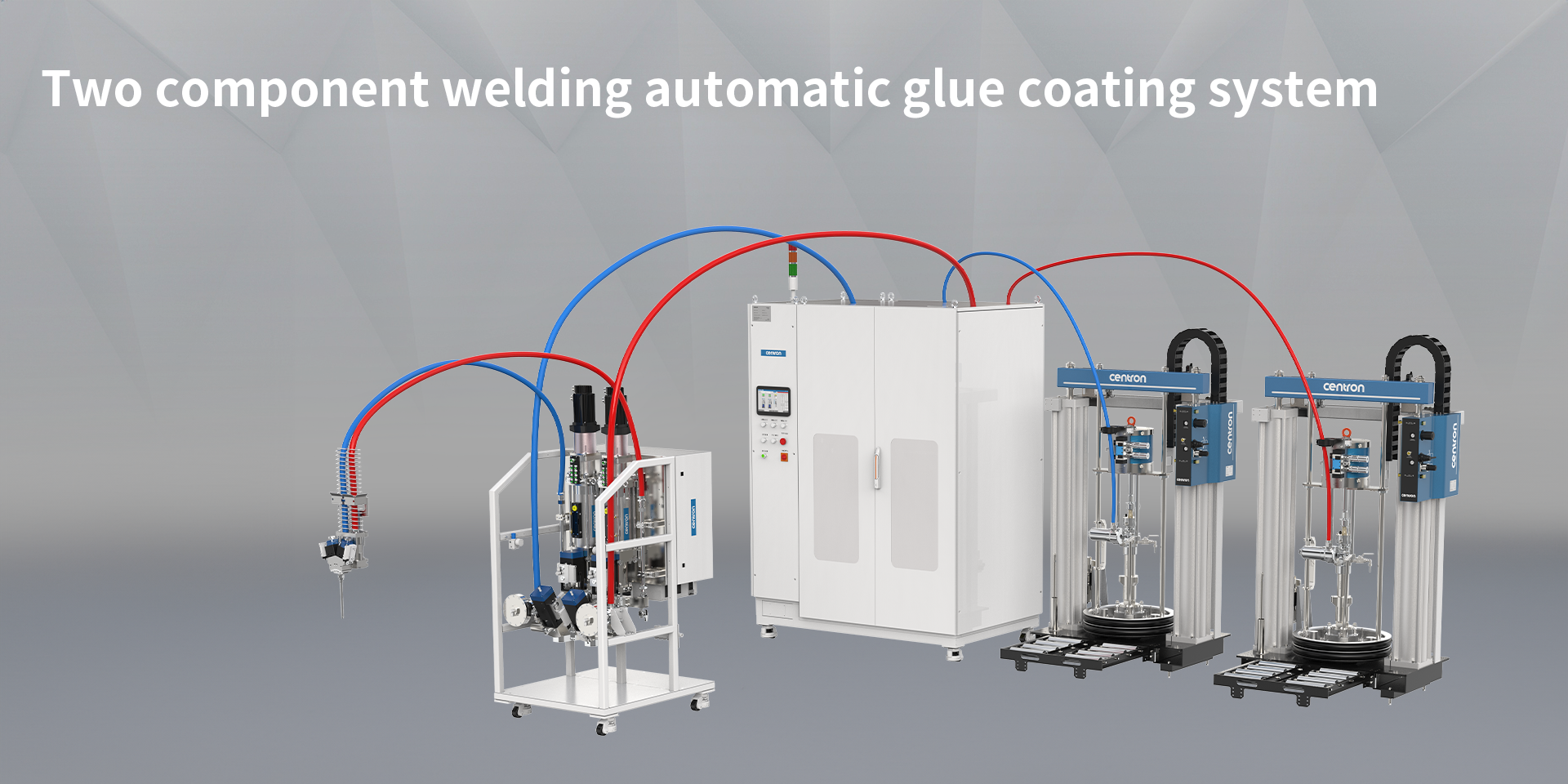How to Achieve Non-Stop Material Changeover in Two-Component Dispensing Systems? 3 Core Design Secrets Revealed!
How to Achieve Non-Stop Material Changeover in Two-Component Dispensing Systems? 3 Core Design Secrets Revealed!
In high-tempo production environments like power battery, automotive welding, and photovoltaic manufacturing,停机换料 often disrupts production rhythms, reducing efficiency. So, how can two-component dispensing systems achieve non-stop material changeover? The key lies in targeted designs across the entire "supply-transfer-control" chain. Centron's two-component dispensing system, for instance, achieves seamless integration of changeover and production through multi-dimensional optimizations.

I. Core Configuration: Dual-Pump Switching Solves the 'Uninterrupted Supply' Challenge
The primary requirement for non-stop material changeover in a two-component dispensing system is ensuring a continuous supply of raw materials. Centron's system addresses this with a dual-pump switching system specifically designed for two-component applications. While one pump unit is replenishing or changing materials, the other can continue to stably supply the two components, entirely eliminating the need for a production halt . This design is particularly suited for processes like structural bonding and thermal conductive potting in power battery manufacturing. Furthermore, the system can be paired with ram pumps or bottom-fed pumps that draw material directly from original 20L/50L/200L packaging, avoiding time wasted on secondary filling and further minimizing changeover intervals . This approach also boasts high material utilization rates, up to 99%, reducing waste and lowering production costs during continuous operation .
II. Transfer System: Pre-treatment & Buffering to 'Safeguard' Changeover
Achieving non-stop changeover also relies on the "buffering guarantee" provided by the transfer system. The core function of the transfer system in Centron's two-component dispensing system is to pre-treat the materials—including operations like electric stirring (with variable speed typically ranging from 5-30 r/min) and vacuum degassing—ensuring material stability before it reaches the metering system . Simultaneously, the system's day tanks, available in various volumes like 30L, 45L, and 60L, act as a buffer for pre-treated material . This buffer ensures the metering system continues to receive qualified material even if the supply is briefly interrupted, preventing production stoppages. Constructed from materials like SUS304 stainless steel with polished interiors and protective coatings, these tanks also help prevent material contamination, ensuring changeover is both "continuous" and "clean" .
III. Control System: Precision Coordination for Maintaining Accuracy During Changeover
Non-stop changeover requires not just continuity but also stable precision, which depends on the efficient coordination of the control system. The CS2000 series control system paired with Centron's two-component dispensing system features a rapid program scan cycle, enabling quick response to material variations during pump switching or transfer, allowing for real-time adjustments to metering parameters to prevent deviations . The system also supports storing numerous independent recipes (e.g., 255), allowing operators to pre-set parameters for different two-component mix ratios and dispensing settings. This enables quick recipe switching during material changeovers without reprogramming, saving time and ensuring parameter consistency . Additionally, advanced control systems can incorporate adaptive functions that self-learn from material viscosity variations, maintaining high metering accuracy (e.g., ±1%) even if new material has slight differences, ensuring both non-stop operation and dispensing quality .
IV. Detail Optimization: Reducing Maintenance Interference, Extending Uptime
Minimizing the impact of maintenance on production is another crucial aspect. Centron integrates technologies like the DuraTec wear-resistant technology and uses wear-resistant sealings and surface materials to enhance compatibility with highly filled, abrasive two-component materials, potentially extending equipment service life by over 50% . Key components such as dispense valve needles and metering screws are selected from durable materials like tungsten steel or stainless steel, and sealing structures undergo rigorous endurance testing (e.g., over 100,000 cycles) to reduce maintenance downtime caused by part wear . These designs help the two-component dispensing system not only achieve non-stop changeover but also reduce maintenance frequency, ensuring long-term continuous production.
Full-Chain Synergy for Efficient Non-Stop Operation in Two-Component Dispensing
Achieving non-stop material changeover in two-component dispensing systems is the result of a fully synergistic approach involving dual-pump switching, transfer system buffering/pre-treatment, and precision control system coordination. Through these designs, systems like Centron's effectively address the issue of production interruption during changeover in high-tempo manufacturing while ensuring dispensing accuracy and quality, meeting the demands of industries like power batteries, automotive, and photovoltaics. For enterprises, selecting a two-component dispensing system with a mature non-stop changeover solution can significantly enhance production efficiency and solidify product quality assurance.




